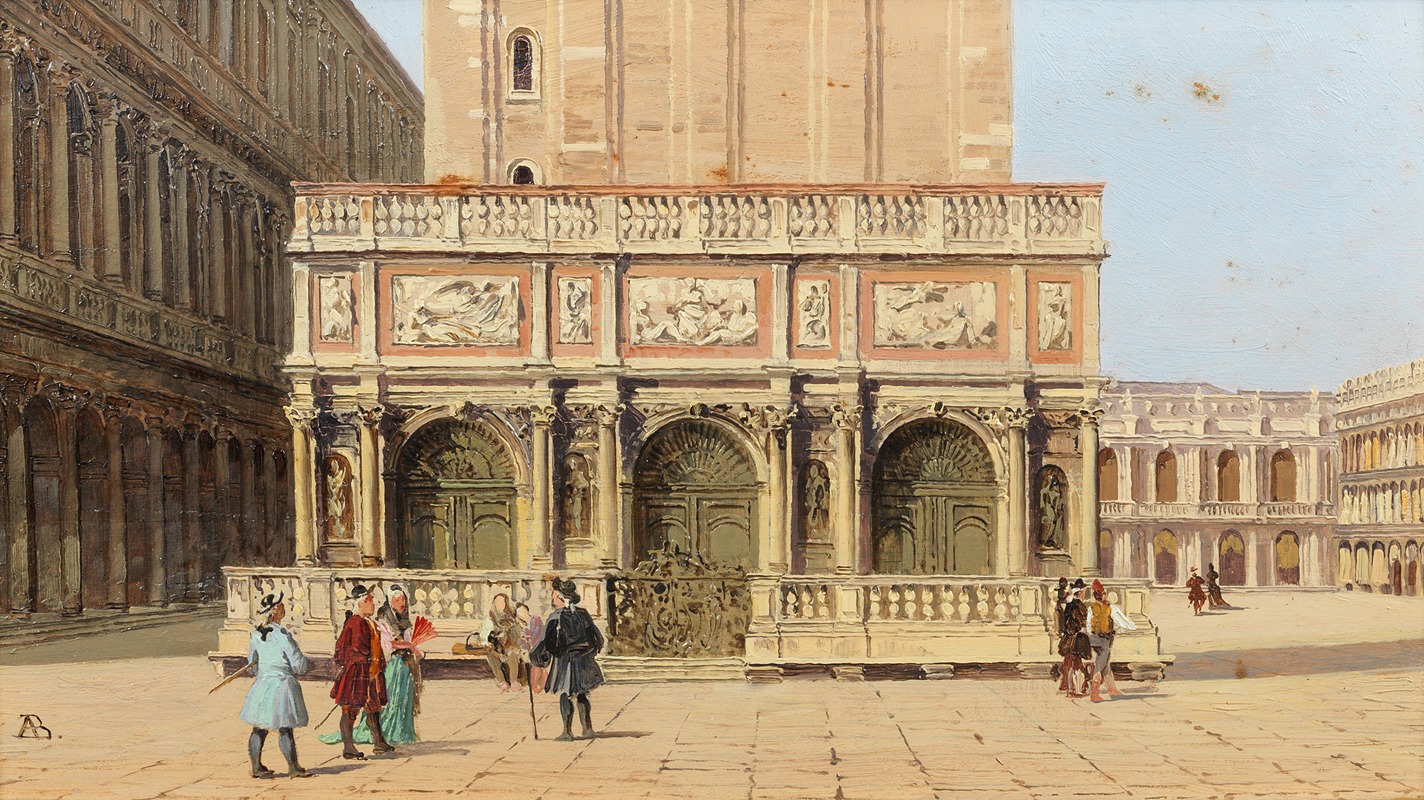
La Loggietta, Piazza di Marco
A hand-painted replica of Antonietta Brandeis’s masterpiece La Loggietta, Piazza di Marco, meticulously crafted by professional artists to capture the true essence of the original. Each piece is created with museum-quality canvas and rare mineral pigments, carefully painted by experienced artists with delicate brushstrokes and rich, layered colors to perfectly recreate the texture of the original artwork. Unlike machine-printed reproductions, this hand-painted version brings the painting to life, infused with the artist’s emotions and skill in every stroke. Whether for personal collection or home decoration, it instantly elevates the artistic atmosphere of any space.
Antonietta Brandeis was a notable 19th-century painter, recognized for her detailed and vibrant depictions of Venetian scenes. Born in 1848 in Miskovice, Bohemia, she later moved to Venice, where she became deeply influenced by the city's unique architecture and atmosphere. Brandeis was one of the few female artists of her time to gain recognition, and she is particularly known for her vedute, or detailed cityscapes, which were popular among tourists and art collectors.
One of her works, "La Loggietta, Piazza di Marco," captures the essence of Venice's architectural grandeur. The painting focuses on the Loggetta, a small but significant structure located at the base of the Campanile di San Marco in Venice. Designed by the renowned architect Jacopo Sansovino in the 16th century, the Loggetta served as a gathering place for nobles and as a guard post for the Venetian Republic. Its intricate design and historical significance make it a popular subject for artists and historians alike.
Brandeis's depiction of the Loggetta is characterized by her meticulous attention to detail and her ability to capture the interplay of light and shadow. Her use of color is both vibrant and realistic, bringing to life the rich textures of the marble and the bustling atmosphere of the Piazza San Marco. The painting not only highlights the architectural beauty of the Loggetta but also provides a glimpse into the daily life of Venice during the 19th century, with figures populating the square, engaged in various activities.
Brandeis's work is often celebrated for its precision and clarity, qualities that are evident in "La Loggietta, Piazza di Marco." Her ability to render architectural details with such accuracy suggests a deep understanding and appreciation of Venetian architecture. This skill likely contributed to her popularity among collectors who sought authentic representations of Venice.
Throughout her career, Brandeis produced numerous paintings of Venice and other Italian cities, each reflecting her keen eye for detail and her passion for capturing the essence of her surroundings. Her works are part of various collections, both public and private, and continue to be appreciated for their historical and artistic value.
"La Loggietta, Piazza di Marco" stands as a testament to Brandeis's talent and her contribution to the genre of vedute painting. It offers viewers a window into the past, allowing them to experience the beauty and vibrancy of 19th-century Venice through the eyes of a skilled and dedicated artist. Her paintings remain a valuable resource for those interested in the history and culture of Venice, as well as for those who appreciate the artistry involved in capturing such iconic scenes.
In summary, Antonietta Brandeis's "La Loggietta, Piazza di Marco" is a fine example of her work, showcasing her ability to blend architectural precision with artistic expression. Her paintings continue to be celebrated for their beauty and historical significance, ensuring her place in the annals of art history.


















